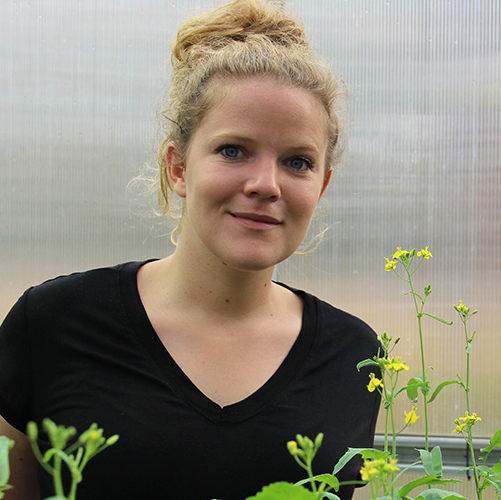
Elena Hamann
Biosketch:
Elena Hamann is Jun.-Prof of Plant Evolutionary Ecology at the Heinrich-Heine University Düsseldorf, Germany. She works on a variety of topics in plant ecology and evolution, with a particular focus on the responses of plant populations to changing environmental conditions (i.e., climate change and novel biotic interactions). In her research, she uses the “resurrection approach", which compares ancestors and descendants, to examine rapid contemporary evolution and uncover the ecological genomics of climate change adaptation. One of her study systems includes Brassica rapa (field mustard), a wild relative of many important Brassicaceae crops. She is now expanding into new native and crop relative systems to identify the drivers of rapid evolution and compare the adaptive potential of species. After seven years in the USA, she is looking forward to establishing and growing her research team at HHU, reviving former European collaborations, especially in Alpine Ecology, and to creating new ones.
Title:
Contemporary evolution in plants: what the resurrection approach (fore)tells about climate change adaptation
Abstract:
Whether populations can keep pace with ongoing climate change remains a long-standing question in evolutionary biology. To study contemporary evolution, the resurrection approach, where ancestors and descendants are compared under common conditions, has emerged as a powerful tool. Using this approach, it is possible to directly quantify evolutionary responses to changes in abiotic conditions or biotic interactions and to uncover the genetic basis of climate change adaptation. In the first part of my talk, I will introduce and illustrate the resurrection approach with the case study of rapid evolution of flowering time in Californian field mustard (Brassica rapa) in response to increasingly severe and frequent drought episodes. In the second part, I will elaborate on how we can use this approach to compare the adaptive potential of species and populations along their distribution range and identify the drivers of rapid evolution. Ultimately, this work can help predict the responses of populations to rapidly changing environments, forecast evolutionary rescue and range shifts, inform targeted conservation efforts for native species, and contribute to crop improvement and sustainable agriculture.
- Studying at Goethe University
- International applicants
- Faculties
- Overview of study programmes
- Programme for refugees
- GRADE
- Goethe Business School (continuing education)
- Research at Goethe University
- Scientific news
- Goethe Welcome Center (for international researchers)
- Collaborative research projects
- Individual research
- Visiting fellowships
- Endowed chairs
- About the University
- News-in-brief
- University administration
- Campus locations
- Campus life
- University archives (German)
- Rhine-Main-Universities






